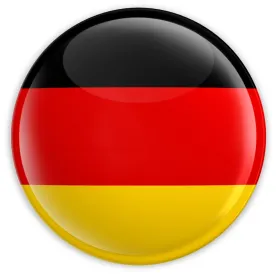The German Act on Tax Incentives for Research and Development became effective 1 January 2020. Under this act, companies and entrepreneurs subject to income or corporation tax in Germany, may apply for subsidies of up to 25% of their R&D activities to a total maximum of EUR 500,000. Respective subsidies are eligible directly after the business year in which the development has been conducted and will be credited against the following tax payment obligation. In particular for (international) corporate groups this may result in material tax savings and requires respective tactical decisions at an early stage to benefit from the subsidies most effectively.
Following the resolution of the German Bundestag on 8 November 2019, the Bundesrat also approved the Act on Tax Incentives for Research and Development (FZulG) on 29 November 2019 and the law has now come into force on January 1, 2020.
In a short period of time, the law has finally (and as already agreed in the coalition agreement) met the various calls from industry and politics for tax advantages and research activities in the interest of Germany as a technology hot spot.
Who is entitled under the FZulG?
Anyone who is subject to limited or unlimited income or corporation tax liability in Germany and generates profit income (income from agriculture and forestry, trade or self-employment) is eligible for the subsidy. Therefore, foreign companies may also be eligible under the above conditions. There is no dependence on the legal form.
In principle, any domestic or foreign company, from sole proprietors to corporations, is eligible for funding.
Which activities are available for subsidies?
Research and development projects which fall into one or more of the categories of fundamental research, industrial research or experimental research are eligible for subsidies. The legislator refers here to Art. 2 No. 84 to 86 of the EU General Block Exemption Regulation. According to the government's explanatory memorandum, this covers creative and systematic work aimed at expanding knowledge and developing new applications on the basis of existing knowledge. The activity must be innovative, creative, uncertain as to the final result, systematic and reproducible. Due to this broad definition, the main exclusion from eligibility is likely to be product development or adaptation and optimization of existing products. Within the eligible categories, it is irrelevant to which field of research the activity is to be assigned, as long as it falls within generic term research and development. With regard to the latter, the FZulG explains that this requires a precisely defined task of an economic, scientific or technical nature with clearly defined objectives along with the steps to be taken to achieve them, including objective guidelines to verify whether the objectives have been achieved. It is irrelevant whether the research and development activity is carried out directly on the company's own premises, as contract research by a contractor or in cooperation with other companies. In the case of contract research, it should be noted that only the commissioner is eligible for funding and only if the contractor's registered office is in the EU or EEA. Where the research activity is carried out, on the other hand, is likely to be irrelevant.
How will the subsidy be calculated?
The basis of assessment for the subsidy is calculated on the basis of a company's eligible expenses in the R&D area. Eligible expenses are
-
the direct costs incurred for wages that are in principle subject to wage tax as well as the employer's expenses for securing the employee's future, provided that the employees are involved in eligible R&D activities;
-
payments to partners or shareholders of a company, provided that these payments are generally subject to wage tax deduction. This may be beneficial for startups which usually employs only a few individuals in the R&D area;
-
In addition, own contributions by an individual entrepreneur in the field of R&D may also be eligible for subsidy. Such own contributions are estimated at a flat rate of EUR 40 per proven working hour with a maximum of 40 working hours per week.
-
For contract research, 60 % of the remuneration paid to the contractor is eligible for subsidy.
In this context, it is essential to ensure that the applicant has verifiable documentation regarding the employees entrusted with R&D tasks. In particular, the hours worked should be clearly documented in a verifiable manner. General departmental allocations are not sufficient.
However, the above-mentioned expenses are only eligible up to a maximum of EUR 2,000,000, which applies to affiliated companies as a whole. The actual research subsidy then amounts to 25% of the eligible expenses, i.e. a maximum of EUR 500,000. However, the total amount of state aid including the research subsidy may not exceed EUR 15,000,000.
When and how can applications for the subsidy be submitted?
The research subsidy must be applied for electronically at the end of the business year at the local tax office where the eligible expenditure was incurred. The eligible expenses must be described in sufficient detail to allow for verification by the tax office. In addition, the application must be accompanied by a certificate stating that the respective R&D project is eligible for subsidies within the meaning of the FZulG.
How can companies obtain the required certification?
According to the government draft of the Tax Incentives for Research and Development Certification Regulation (FZulBV), the Federal Ministry of Education and Research shall be responsible for the technical supervision of issuing this certificate. The Bundesrat has initially expressed reservations in this regard. The actual examination of the individual applications will be carried out by certification bodies.
Each application must include
-
Information on the R&D project, in particular a description of its content,
-
Information on the time, personnel and financial scope of the R&D project and
-
Name, address, contact information, tax number and, if applicable, Commercial Register number.
Within 3 months after submission of the complete information, the certificate shall be forwarded to the applicant and sent to the relevant tax office.
How is the subsidy effected?
The fixed research subsidy is not paid out directly. Rather, it will be credited in full, against the assessed tax in the next assessment for income or corporation tax. In the event that the research subsidy exceeds the income tax or corporation tax assessment, the difference will be paid out. If the company has made losses in the relevant assessment period, the research subsidy may be paid out in full.
As a result, the new FZulG can create considerable tax advantages for all companies in the R&D sector. Potentially eligible companies should consider early on, whether and how they can benefit from the subsidy. These considerations can begin with the tax liability in Germany and continue up to the specific contractual design of the R&D activities. This is especially relevant for international corporate groups that may benefit from the subsidies by shifting research activities to eligible subsidiaries. An advantage over other European countries is that funding can be applied for in Germany as early as the development stage itself and not only in the course of exploitation via licenses.




 />i
/>i

